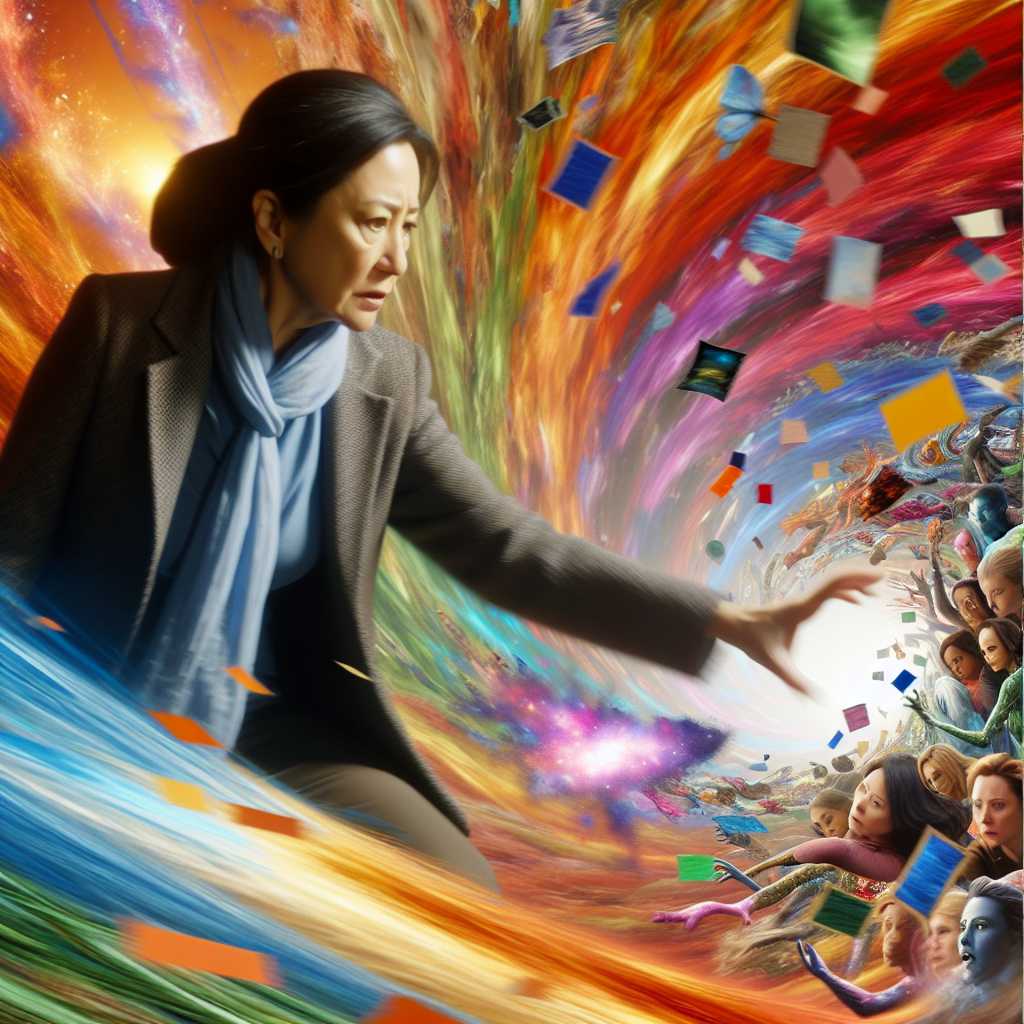Understanding the Multiverse of ‘Everything Everywhere All at Once’
“Everything Everywhere All at Once” is a high-concept science-fiction film that takes the idea of multiverse theory to new, vibrant levels. Its psychedelic blend of narrative styles, visuals, and genre genetics transcends traditional storytelling to deliver a multi-layered experience. This film explores themes ranging from existentialism and nihilism to the more banal struggles of personal relationships, particularly between immigrants and first-generation offspring in the United States. Created by directors Daniel Kwan and Daniel Scheinert (collectively known as “the Daniels”), it bends genre conventions in as many ways as its title suggests.
Synopsis and Narrative Innovations
While squarely within the realm of science fiction, “Everything Everywhere All at Once” uses its genre attributes to explore otherwise familiar character dynamics and emotional beats. We follow Evelyn Wang (played by Michelle Yeoh), a Chinese-American laundromat owner who discovers she is capable of accessing her lives in countless alternate universes.
As Evelyn grapples with an IRS audit, family drama, and amorphous existential threats, the story dips in and out of these realities, threading a narrative that is both cohesive and deliberately schizophrenic. It employs a storytelling technique that allows events in one universe to affect skills, memories, or emotions in another, opening up endless possibilities for character development and visual storytelling.
Visual Style and Aesthetic
The directors use an eclectic visual style that complements the narrative’s sprawling reach. From fast-paced action sequences that nod to martial arts films to surrealistic imagery reminiscent of Terry Gilliam’s oeuvre, the visuals serve the story by keeping viewers constantly on their toes. Additionally, the costume design and special effects help differentiate between universes and lend a dynamic palette to Evelyn’s twisting journey.
Themes and Philosophical Underpinnings
“Everything Everywhere All at Once” also delves into philosophical questions about meaning and connection in a chaotic universe. The barrage of bizarre turns and endless choices encapsulates the modern anxiety over information overload and decision fatigue. It prominently comments on generational conflict within immigrant families and the search for an anchor in cultural identity.
Soundtrack and Music Composition
The auditory aspect of “Everything Everywhere All at Once,” greatly emphasizes the kaleidoscopic experience promised by the film. Composed by Son Lux, the musical score embodies the chaotic harmony of its scenes, merging traditional cinematic scoring with eclectic musical experimentation to accentuate emotion and transition.
Cultural Impact and Audience Reception
Since its release, “Everything Everywhere All at Once” has resonated with critics and audiences alike for its bold direction and innovative fusion of ideas. Its focus on an Asian-American lead has been praised for representation within Hollywood narratives and its universal message—that amidst the overwhelming nature of existence, what’s important is the connections we form with others—has found a foothold even beyond the sci-fi community.
Critical Analysis
The movie has garnered attention for transcending typical sci-fi fare through sheer ingenuity and bravado. Critics note how it approaches heavy subjects like nihilism with surprising humor and lightness while remaining laden with subtext. The film not only challenges but revels in breaking structural conventions.
Awards and Recognitions
Due to its standout merit, “Everything Everywhere All at Once” has found itself in various award conversations, receiving nominations for technical categories as well as acting for Michelle Yeoh’s transformative performance alongside a robust supporting cast that includes actors like Stephanie Hsu and Ke Huy Quan.
